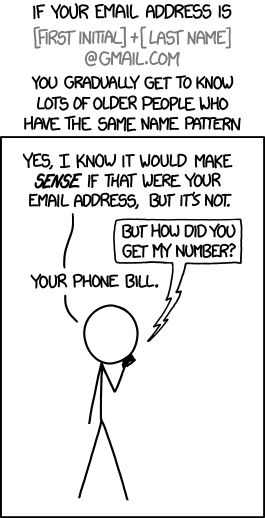Data is the key to deliverability
- laura
- July 21, 2015
- Best practices
Last week I had the pleasure of speaking to the Sendgrid Customer Advisory Board about email and deliverability. As usually happens when I give talks, I learned a bunch of new things that I’m now integrating into my mental model of email.
One thing that bubbled up to take over a lot of my thought processes is how important data collection and data maintenance is to deliverability. In fact, I’m reaching the conclusion that the vast majority of deliverability problems stem from data issues. How data is collected, how data is managed, how data is maintained all impact how well email is delivered.
Collecting Data
There are many pathways used to collect data for email: online purchases, in-store purchases, signups on websites, registration cards, trade shows, fishbowl drops, purchases, co-reg… the list goes on and on. In today’s world there is a big push to make data collection as frictionless as possible. Making collection processes frictionless (or low friction) often means limiting data checking and correction. In email this can result in mail going to people who never signed up. Filters are actually really good at identifying mail streams going to the wrong people.
The end result of poor data collection processes is poor delivery.
There are lots of way to collect data that incorporates some level of data checking and verifying the customer’s identity. There are ways to do this without adding any friction, even. About 8 years ago I was working with a major retailer that was dealing with a SBL listing due to bad addresses in their store signup program. What they ended up implementing was tagged coupons emailed to the user. When the user went to the store to redeem the coupons, the email address was confirmed as associated with the account. We took what the customers were doing anyway, and turned it into a way to do closed loop confirmation of their email address.
Managing Data
Data management is a major challenge for lots of senders. Data gets pulled out of the database of record and then put into silos for different marketing efforts. If the data flow isn’t managed well, the different streams can have different bounce or activity data. In a worst case scenario, bad addressees like spamtraps, can be reactivated and lead to blocking.
This isn’t theoretical. Last year I worked with a major political group that was dealing with a SBL issue directly related to poor data management. Multiple databases were used to store data and there was no central database. Because of this, unsubscribed and inactivated addresses were reactivated. This included a set of data that was inactivated to deal with a previous SBL listing. Eventually, spamtraps were mailed again and they were blocked. Working with the client data team, we clarified and improved the data flow so that inactive addresses could not get accidentally or unknowingly reactivated.
Maintaining Data
A dozen years ago few companies needed to think about any data maintenance processes other than “it bounces and we remove it.” Most mailbox accounts were tied into dialup or broadband accounts. Accounts lasted until the user stopped paying and then mail started bouncing. Additionally, mailbox accounts often had small limits on how much data they could hold. My first ISP account was limited to 10MB, and that included anything I published on my website. I would archive mail monthly to keep mail from bouncing due to a full mailbox.
But that’s not how email works today. Many people have migrated to free webmail providers for email. This means they can create (and abandon) addresses at any time. Free webmail providers have their own rules for bouncing mail, but generally accounts last for months or even years after the user has stopped logging into them. With the advent of multi gigabyte storage limits, accounts almost never fill up.
These days, companies need to address what they’re going to do with data if there’s no interaction with the recipient in a certain time period. Otherwise, bad data just keeps accumulating and lowering deliverability.
Deliverability is all about the data. Good data collection and good data management and good data maintenance results in good email delivery. Doing the wrong thing with data leads to delivery problems.

